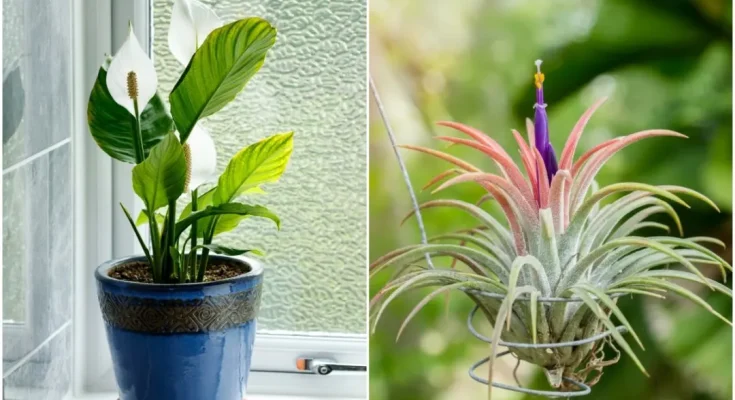Humans have been bringing plants inside the home for thousands of years. Not only do they clean the air and brighten up a room, they carry all sorts of intangible benefits.
We are happier, healthier, and smarter when we are among our houseplants.
As long as there is good light, there’s a plant for every room. The living room, kitchen, dining area, bedroom, and office all make great plant homes – and so does the bathroom.
Not all plants will flourish in a water closet but some will positively thrive under these especially warm and steamy conditions.
The 3 Qualities Necessary for a Bathroom Plant
From the perspective of the plant, the bathroom is a completely different milieu than other areas of the home. The lavatory tends to be warm and wet and less bright.
For plants to prosper here, they will need to possess all of these attributes:
1. Prefers a High Humidity Environment
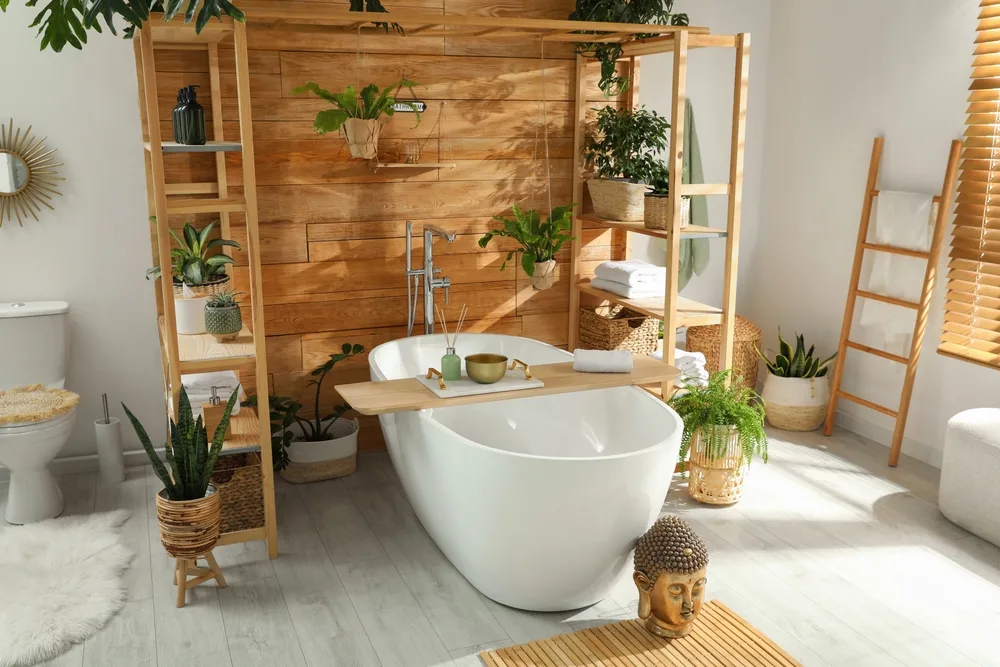
Water is ever present in the bathroom. Running faucets, flushing toilets, and really, any standing or moving water at all, will keep humidity levels higher than most other areas of the home. Throw in a daily shower or two and the bathroom becomes a mist-filled oasis for a few hours each day.
Thankfully many of our favorite houseplants would be much happier in a high humidity environment. Tropical and subtropical plants are adapted to balmy jungles and dewy forests where humidity levels are 80% or more.
Most homes have a relative humidity of 30% to 50%, and this is often not enough to satisfy humidity loving ferns, aroids, or orchids. In winter when the air is particularly dry, humidity can plunge down to 20% or less.
There’s lots of ways to increase humidity and keep your houseplants contented, but plopping them in a room with running water – kitchen, laundry room, or bathroom – is an easier way to do it.
2. Can Adapt to Low Light
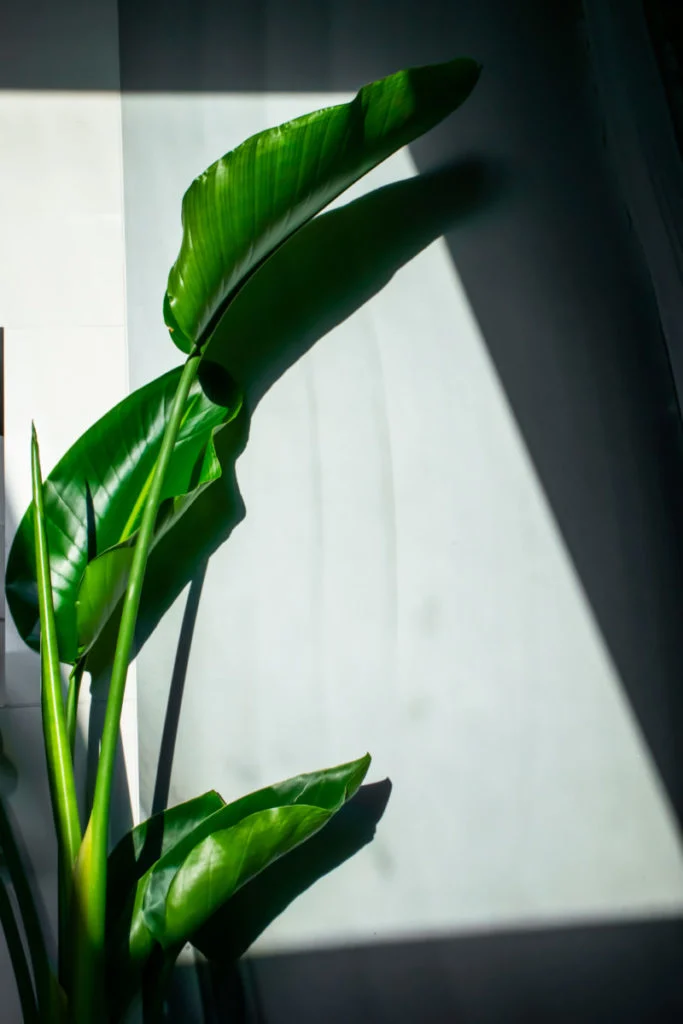
Bathrooms generally suffer from lower levels of natural light. Many are designed with smaller windows for privacy, and smaller windows means letting in less sunlight. And that’s if you’re fortunate enough to have a window at all!
Even a huge window will need be covered up with curtains for at least part of the day. Or perhaps the windows themselves are made from tempered or frosted glass that will filter and block sunlight.
There are certainly a few tricks you can use to boost light levels. Instead of heavy drapes, hang up sheers or solar shades to let in more light. Even if your bathroom is windowless, you can keep your plant buddies happy with a few grow lights on a timer.
But for the most part, bathroom plants shouldn’t be sun-lovers. When choosing plants, understory plants that are adapted to less light are the safest bet.
3. Will Tolerate Swings in Temperature
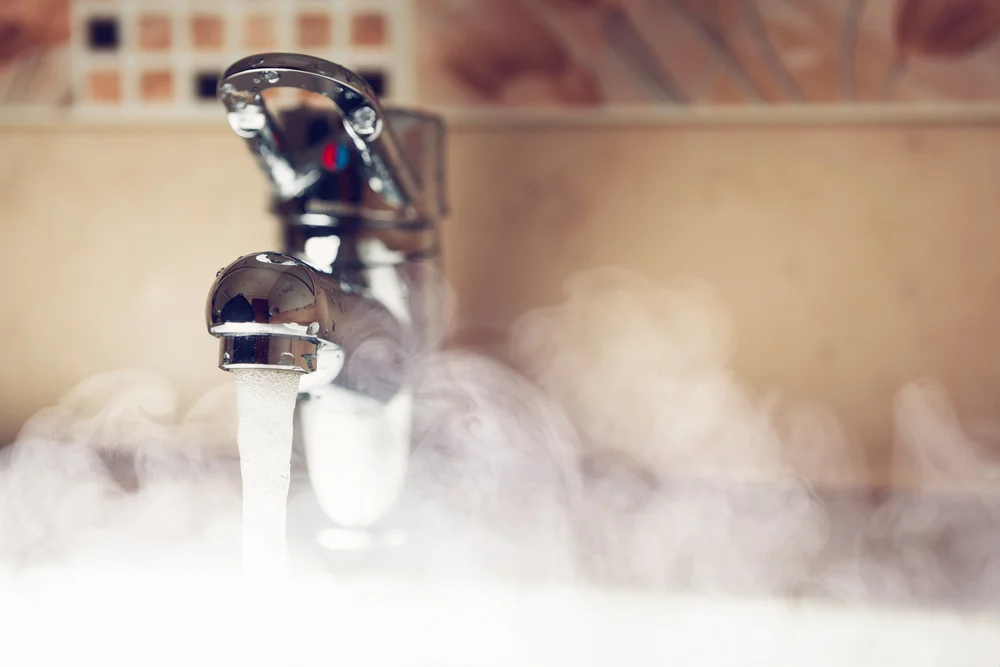
While a powder room might always be warm due to its smaller size, a larger 3 or 4 piece bath will fluctuate in temperature depending on whether or not it is in use.
For every hot bath or steamy shower that happens periodically throughout the day, the bathroom’s temperature will increase by a few or several degrees – especially if you bathe with the door closed. Between showers, the temperature will drop back down to normal room temperature.
Most houseplants grow best between 65°F and 75°F (18°C to 24°C) and can even acclimate to higher and lower temperatures a few degrees outside of this range – provided it’s consistent.
Sudden swings in temperature can cause leaves to yellow and drop in some fussier cultivars, so you’ll want to make sure your bathroom plants can tolerate a wide range of temperatures.
The 10 Best Houseplants for Your Bathroom
As far as the plant’s concerned, the bathroom might as well be the misty jungle.
Plants best matched to a bathroom climate are ones that grow wild in the understory of tropical rainforests where it’s warm and humid and light is filtered by the tree canopy overhead.
Here are 10 rainforest understory plants that would love to live in the loo:
1. Peace Lily (Spathiphyllum wallisii)
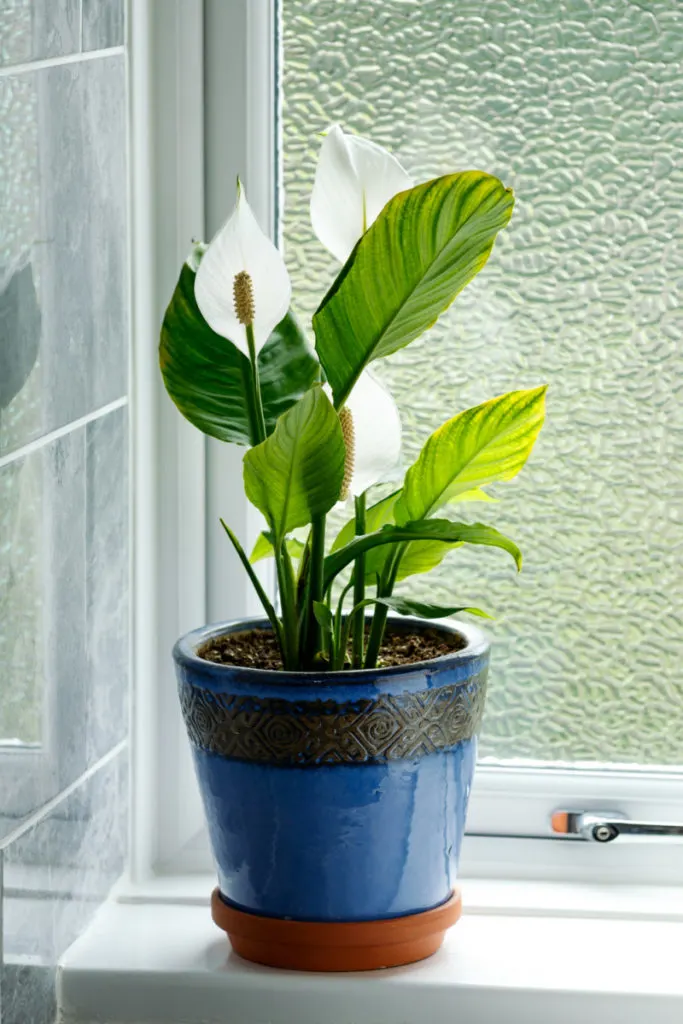
Peace lilies are beloved for their easygoing nature and captivating aroid inflorescences that flower freely throughout the year.
The unusual blooms have a white leaf-like hood (the spathe) wrapping around a spiky yellow to green spadix. The foliage grows in dense clumps with glossy, deep green, lance-shaped leaves that are quite pretty all on their own.
These plants are native to the tropical parts of Central and South America, where they trail along the forest floor. Peace lilies love warmth and moisture and shade and are the perfect pick for a bathroom environment.
Although peace lilies can adapt to very low light conditions, they will bloom best and most often when given bright indirect light or medium light. Whatever you do, don’t place peace lilies in direct sunlight lest you want scorched leaves.
Light requirements: Bright indirect light to low light
Water needs: Allow the soil to dry between waterings
Temperature range: 68°F to 85°F (20°C to 30°C)
2. Bromeliad (Guzmania lingulata)
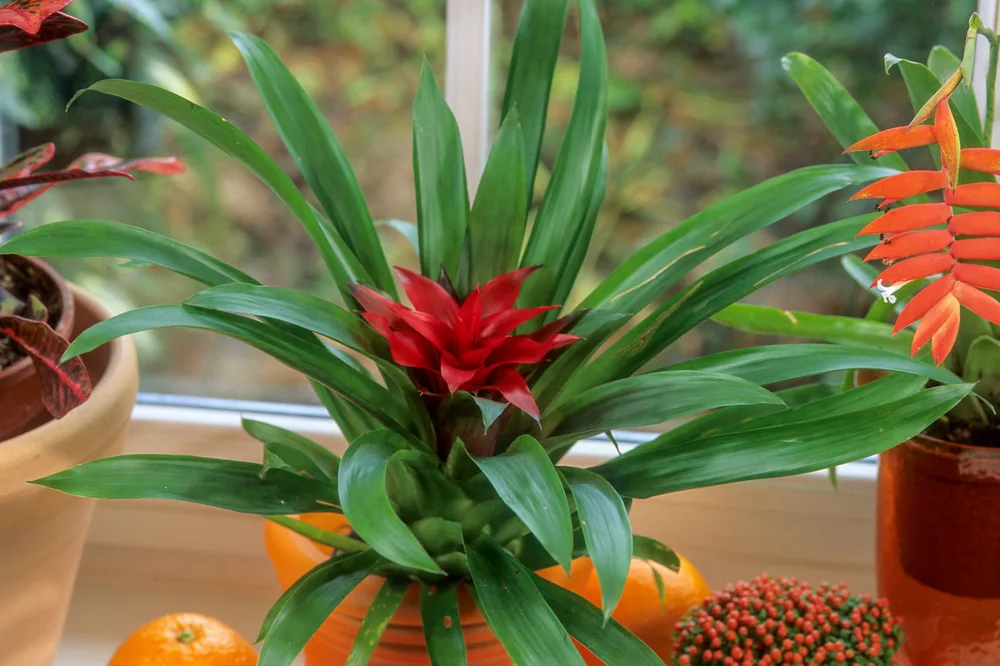
Bromeliad – also known as scarlet star – is indigenous to rainforest habitats from southern Mexico to central South America.
An epiphyte that obtains all its water and mineral needs from the surrounding air, scarlet star bromeliads will definitely appreciate the high humidity of a bathroom.
There’s thousands of species in the Bromeliaceae family (including pineapple), but scarlet star is one of the most recognizable members.
Forming a rosette of large strappy green leaves that can reach 18 inches in length, this cultivar bears vibrantly hued bracts in red, pink, orange, or yellow. The flowerhead houses up to 50 tiny white flowers in the center. These fantastic blooms can persist on the plant 2 to 4 months at a time.
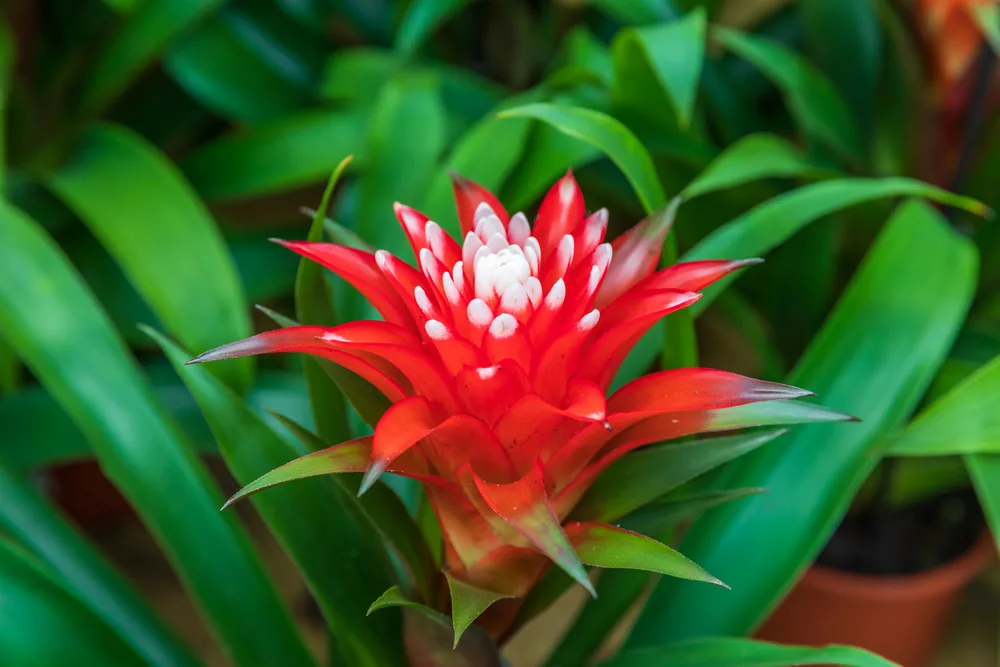
Place bromeliads in bright, indirect light. Make sure your soil mix is porous and well-draining to prevent root rot.
When scarlet star has finished flowering, the mother plant will begin to die back. Before it goes, it will generously provide offshoots (or “pups”) for you to regrow.
Light requirements: Bright indirect light
Water needs: Allow the soil to dry between waterings
Temperature range: 60°F to 80°F (16°C to 27°C)
3. Moth Orchid (Phalaenopsis spp.)
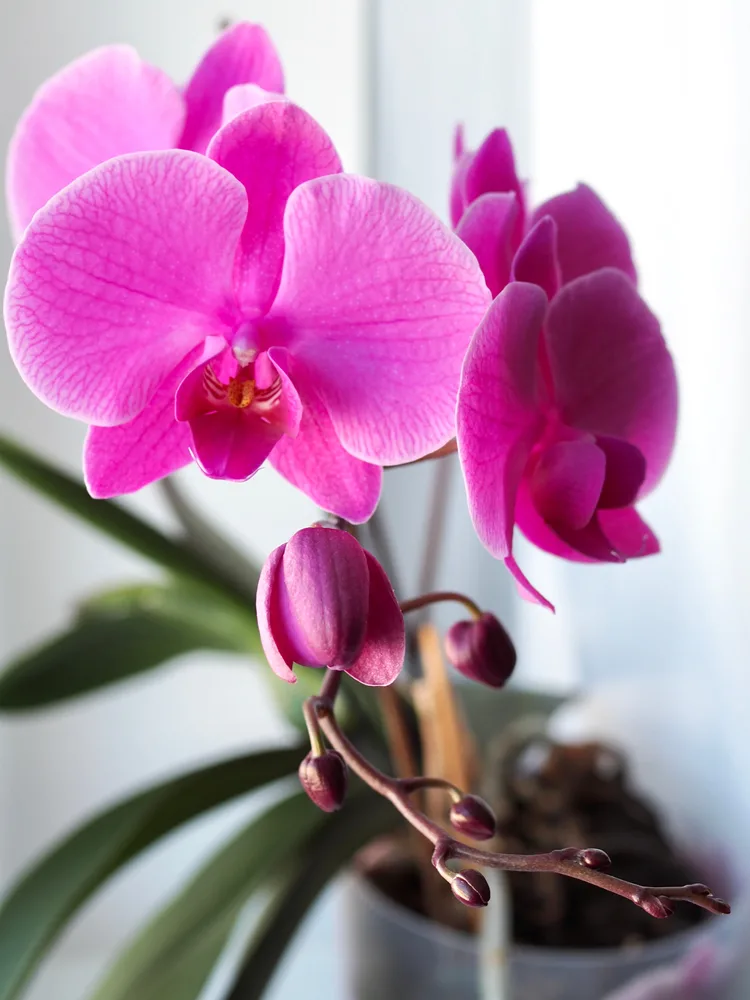
Though orchids have a reputation for being exceptionally finicky, moth orchids are some of the easiest to grow – and they happen to be a great match for the bathroom biome.
These gorgeous epiphytes come from the tropics of Southeast Asia and are happiest in low light, warm temperatures, and high humidity.
Moth orchids have thick and fleshy leaves at the base of the plant. A single long and arching stem bears sweetly fragrant flowers along racemes or panicles. The flower shape resembles a moth – hence its common name – and come in pinks, purples, whites, and variegated hues.
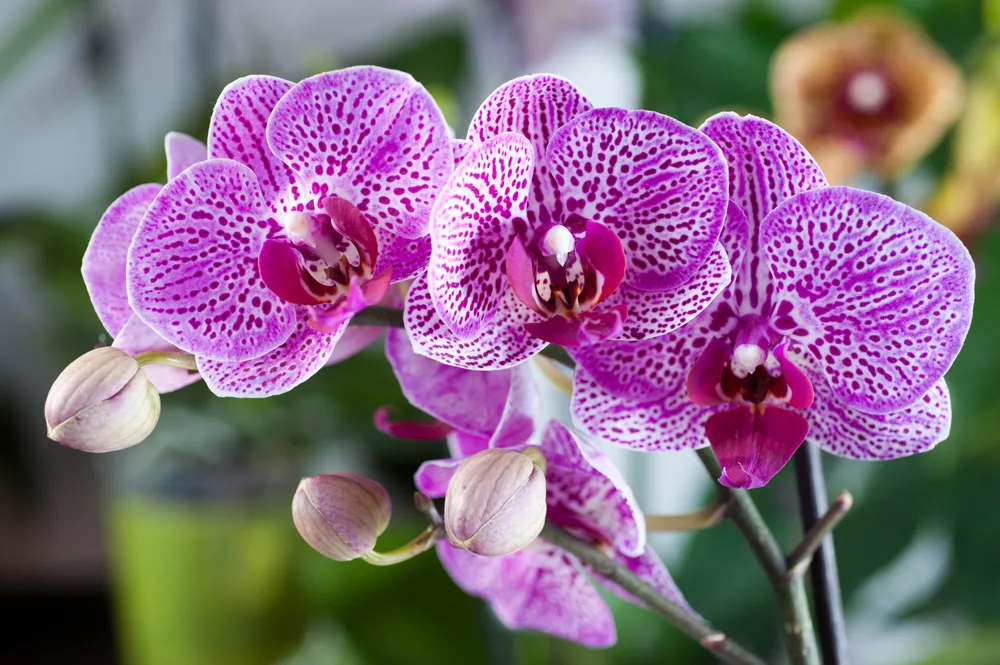
The blooms are long-lasting (up to 4 months or more) and will reflower once a year with the right care.
Classed as low light orchids, moth orchids will rebloom best in bright indirect light. Olive green foliage means the lighting is perfect; dark green means it’s not getting enough light and red-tinged signals too much light.
Light requirements: Bright indirect light to medium light
Water needs: Water deeply once per week; never allow the growing medium to dry completely
Temperature range: 60°F to 80°F (16°C to 27°C)
4. Maidenhair Fern (Adiantum raddianum)
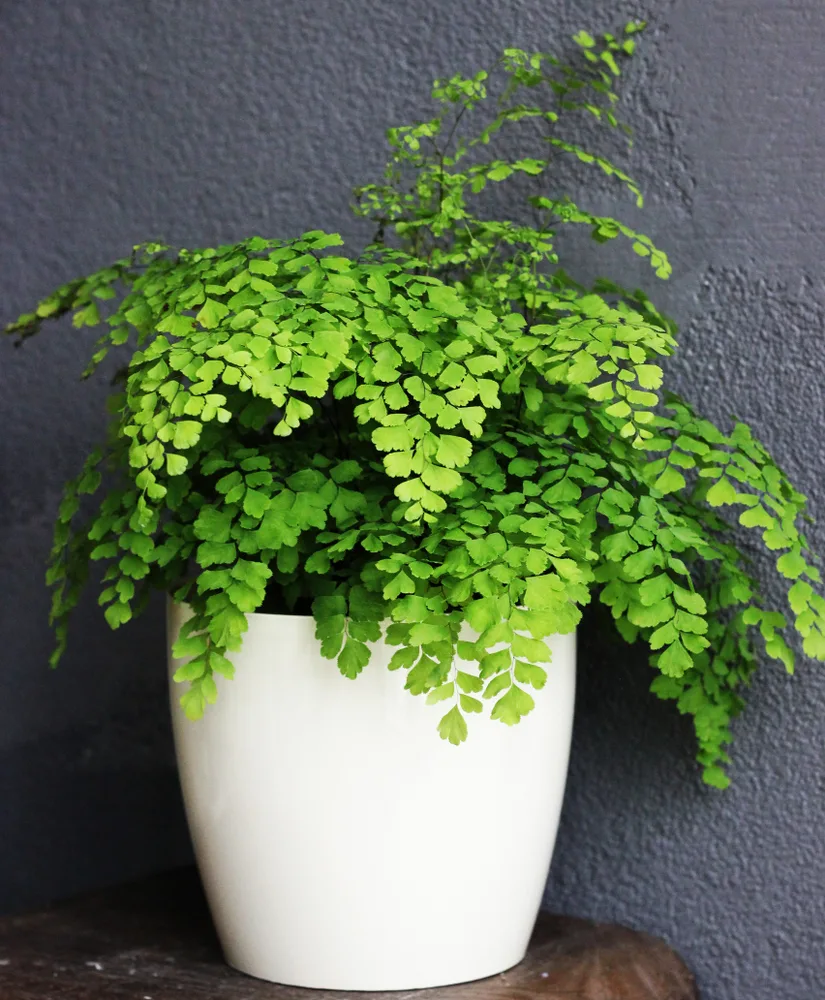
Maidenhair fern is a graceful and delicate beauty that can be a bit temperamental when you don’t fulfill her very specific needs.
As a native to the tropics and subtropics of South America where it grows in damp shade, maidenhair fern can be difficult to keep as a houseplant because it requires lots of moisture in the air to really thrive.
It’s well worth the extra effort to see maidenhair fern’s arching stems, black and nearly as thin as a strand of hair, dangling with fan-shaped pinnate leaflets. The fronds shimmer and tremble with any movement.
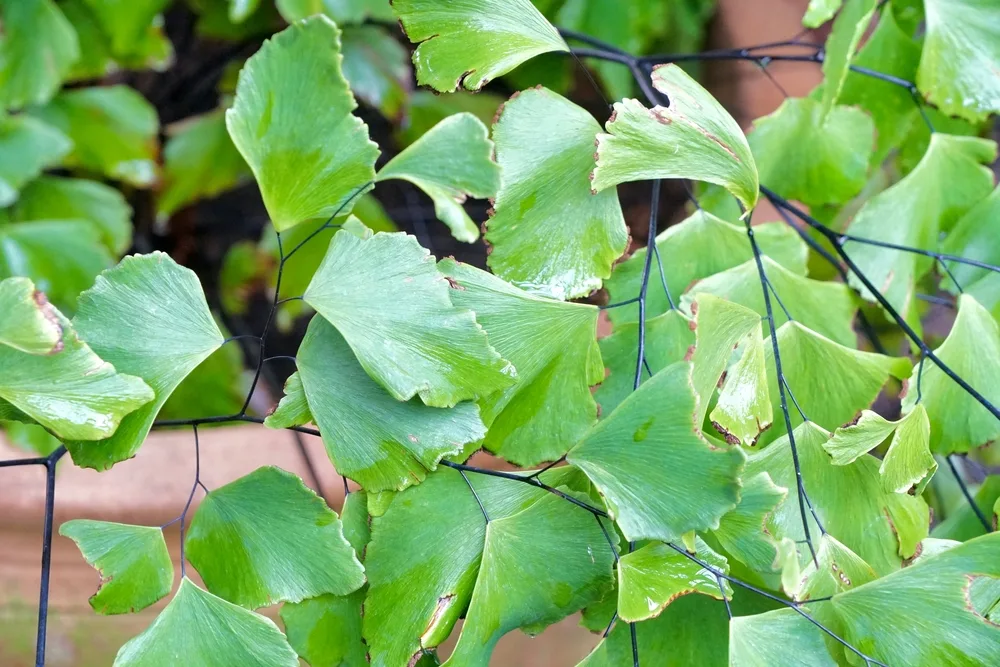
This plant would very much appreciate the high humidity atmosphere of the bathroom. A spot with bright indirect light or diffused sun is best.
Light requirements: Bright indirect light
Water needs: Keep the soil consistently moist
Temperature range: 60°F to 75°F (16°C to 24°C)
Alternatively, try this new fern in the bathroom: the ‘Crispy wave’ fern.
5. Dragon’s Tongue (Hemigraphis repanda)
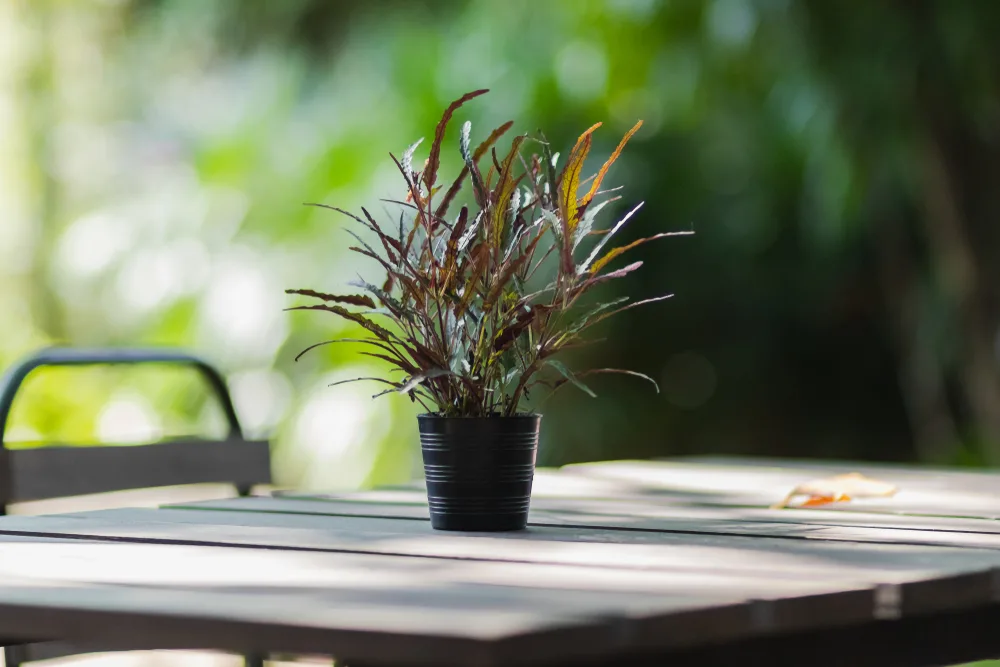
Dragon’s tongue is a pint-sized plant packed with texture and color.
A low grower that maxes out at 6 inches tall and 12 inches wide, dragon’s tongue has grass-like leaves with wavy margins. The foliage is a marvelous mixture of green to purple to burgundy hues.
As an understory plant from tropical Malaysia, it can survive in lower humidity environments but will be its most lively in a moisture-rich bathroom.
Place dragon tongue in bright indirect light to bring out its vibrant colors.
Light requirements: Bright indirect light
Water needs: Water when top inch of soil is dry to the touch
Temperature range: 60°F to 75°F (16°C to 24°C)
6. Sky Plant (Tillandsia ionantha)
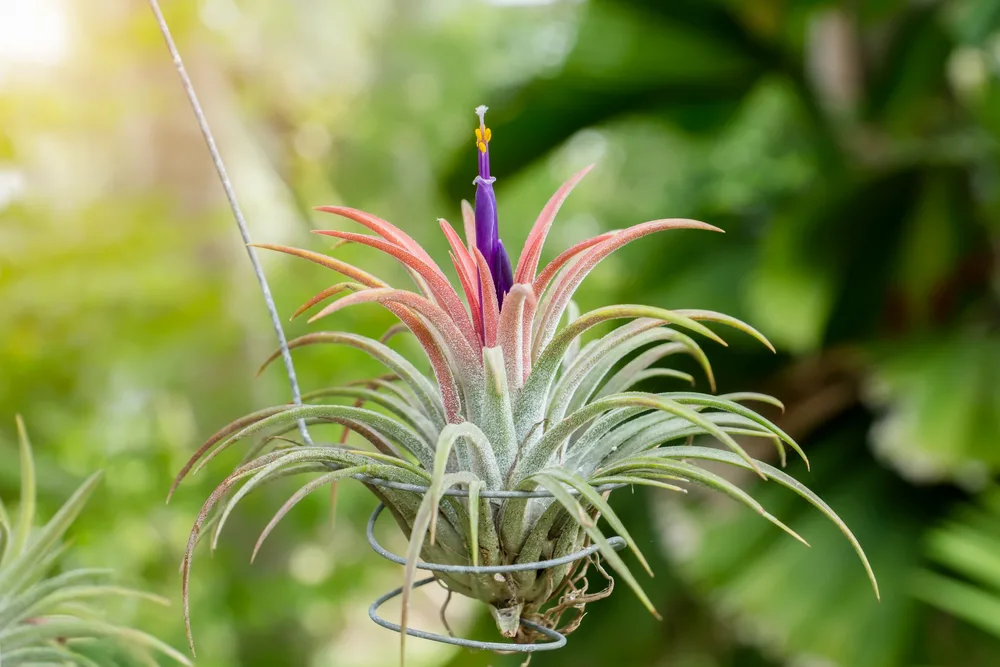
Tillandsia – or air plants – have the wonderfully alien habit of never needing to be planted up in soil. With roots and flesh exposed, these plants are wholly sustained by moisture in the surrounding air.
Sky plants are one species of Tillandsia that are low maintenance, hardier than most, and a great bathroom pick.
Forming a rosette of pointy succulent leaves, sky plants are epiphytes that enjoy warm and humid conditions similar to their native range through Central and South America.
The green and silvery leaves will turn bright red and pink just before flowering with a deep purple inflorescence. Plants can be long lived but will expire just after blooming, leaving behind some pups to propagate.
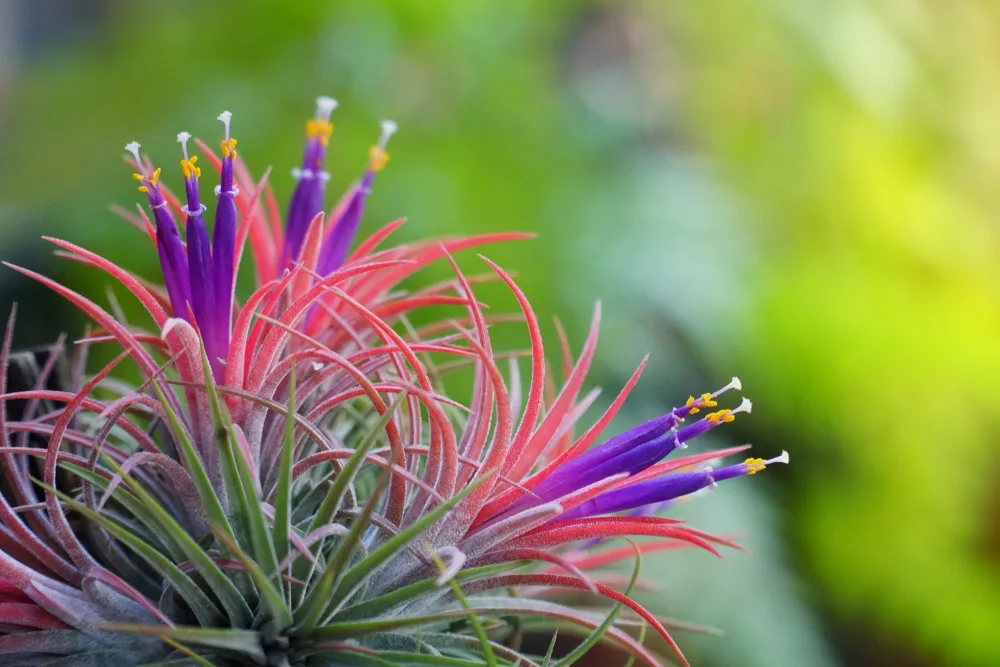
As with all air plants, never plant sky plants in soil. They will root to anything they touch and are frequently mounted on seashells or pieces of driftwood, set in soilless pots or glass bowls.
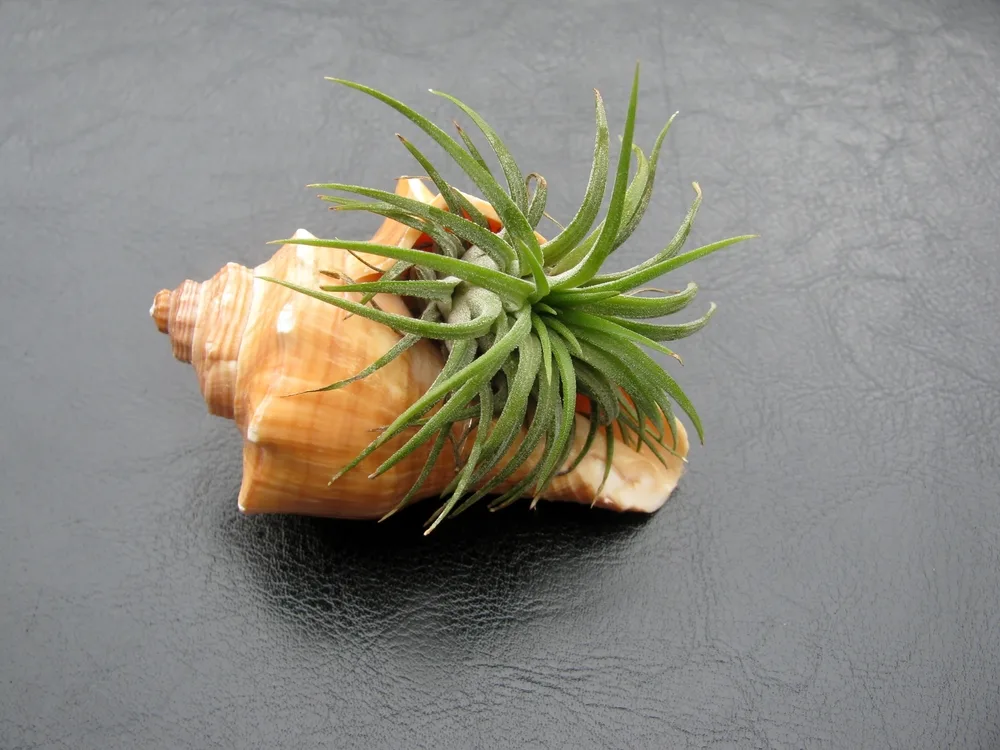
Situate sky plant in a steamy bathroom in filtered light and you shouldn’t have to mist it very often, perhaps once a week.
Light requirements: Bright indirect light or dappled sunlight
Water needs: A light misting once a week
Temperature range: 60°F to 80°F (16°C to 27°C)
7. Dragon Tree (Dracaena marginata)
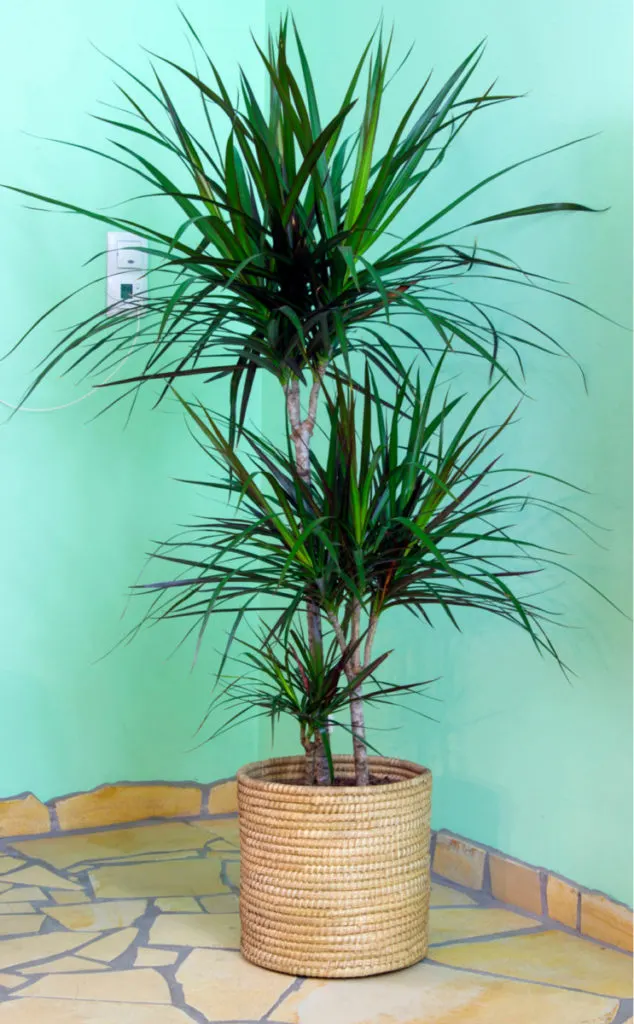
Dragon tree has been a favorite houseplant since at least the 1960s and it’s not hard to see why. This tropical specimen is low maintenance, can withstand a haphazard watering schedule, and is nearly impossible to kill.
A looker too, dragon tree grows from gray slender canes topped with narrow sword-shaped leaves tinged with red, yellow, or pink, depending on the cultivar. As it grows taller and taller, it will drop its lower leaves, giving the plant a palm tree appearance.
Though they can start out quite small as a tabletop plant, dragon trees can eventually grow to be 6 feet tall.
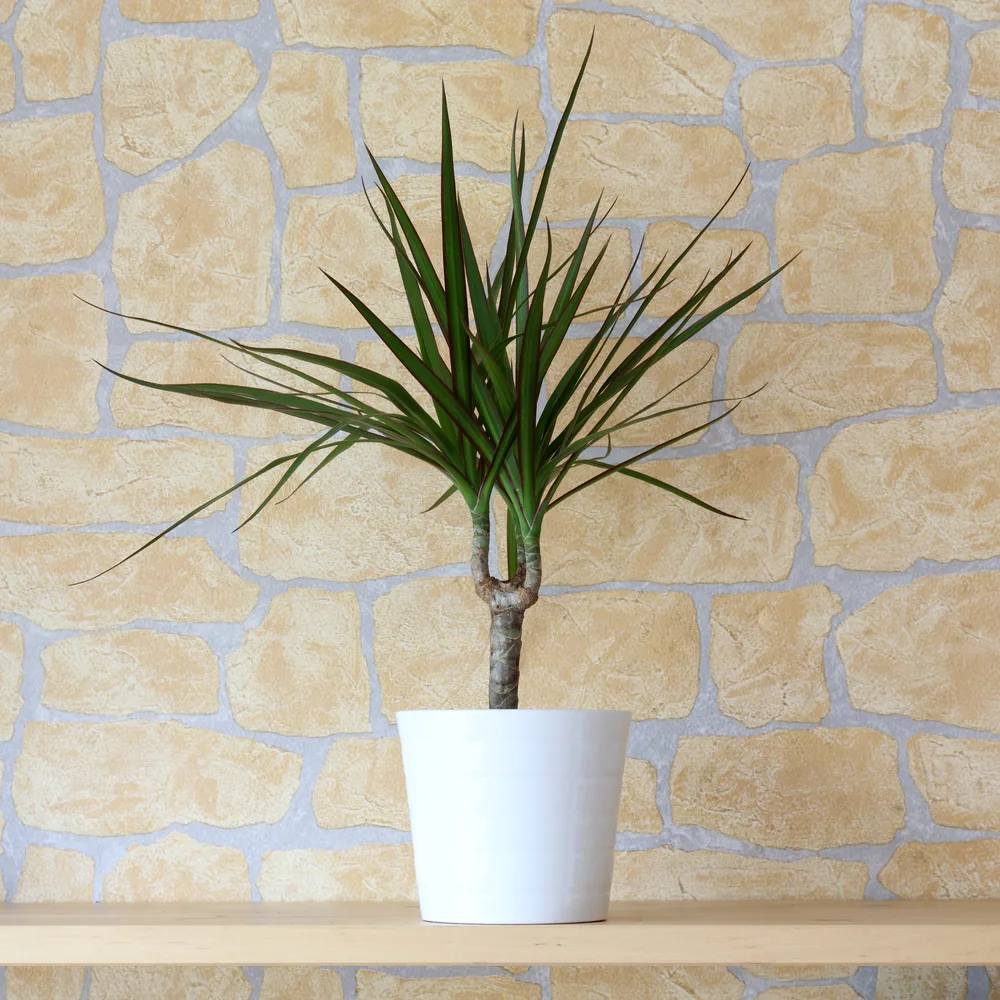
Placing these Madagascar natives in a spot with bright indirect light will bring out the most dramatic foliage colors, but dragon tree can also make do in low light and shaded locations.
Average household humidity is perfectly acceptable to dragon tree, but the plant wouldn’t mind the higher moisture of a bathroom setting either.
Light requirements: Bright indirect light to low light
Water needs: Keep the soil consistently moist
Temperature range: 60°F to 80°F (16°C to 27°C)
8. Ti Plant (Cordyline fruticosa)
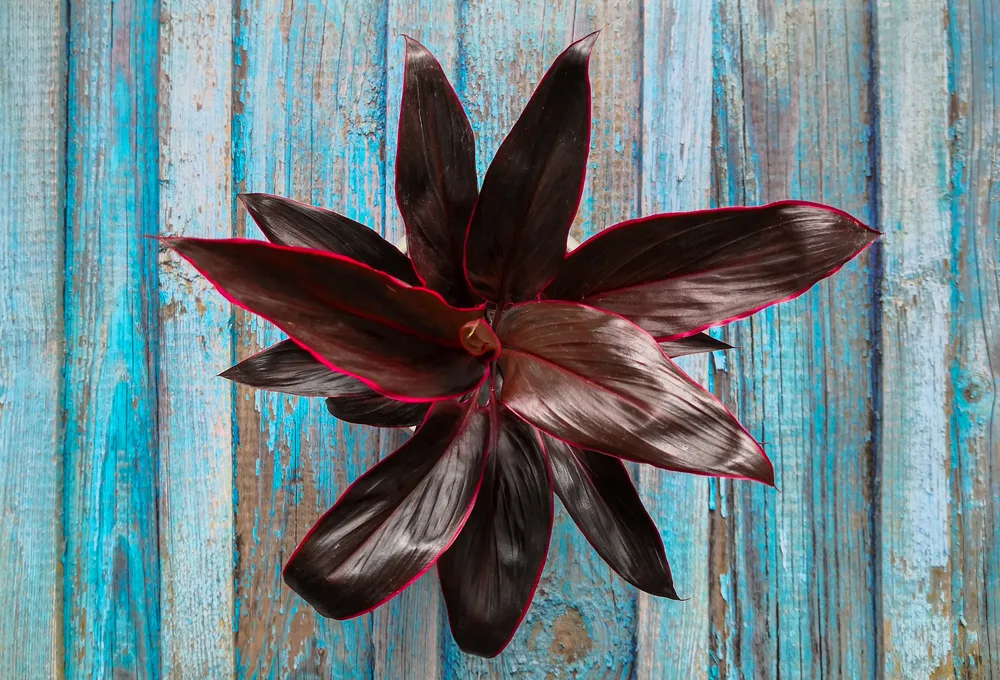
Ti plant comes to us from tropical Southeast Asia and the Pacific Islands where it grows as a small tree or shrub.
Indoors it can reach an impressive 6 feet in height, bearing long lance-shaped leaves up to 6 inches wide. The foliage first emerges in pink to magenta to red tones before the leaves eventually take on a deep green hue.
Older plants will lose their lower leaves, revealing a slender, cane like trunk.
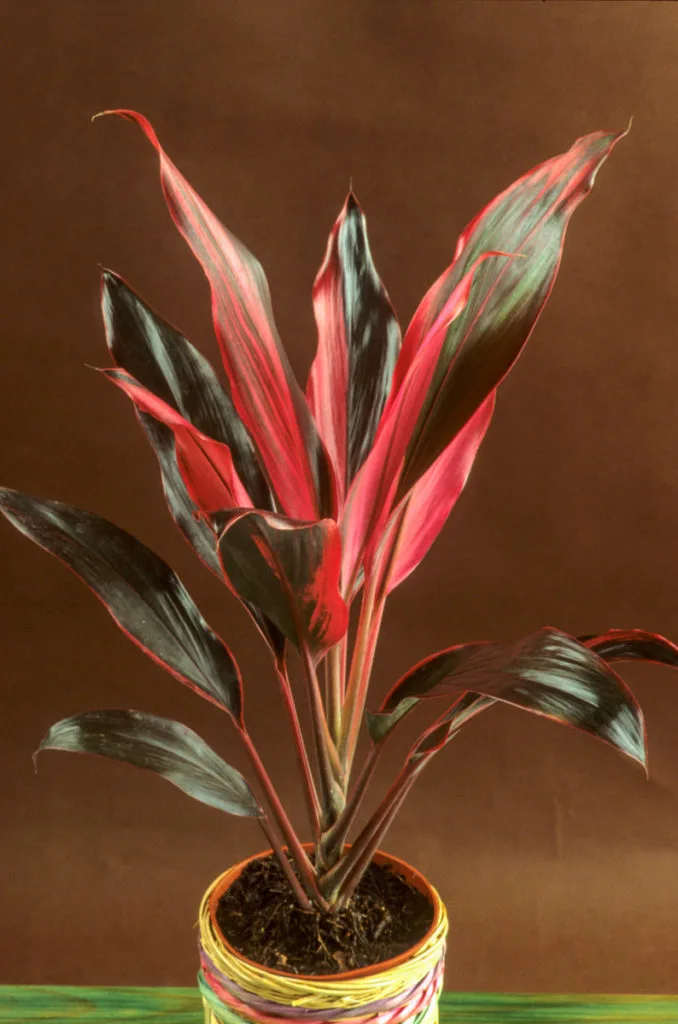
It’s an easy plant to grow as long as you can satisfy its needs for humidity and light. A bright bathroom is the perfect spot. Though ti plant can tolerate light shade, indirect sunlight is best.
Light requirements: Bright indirect light to medium light
Water needs: Keep the soil consistently moist
Temperature range: 65°F to 80°F (18°C to 27°C)
9. Nerve Plant (Fittonia albivenis)
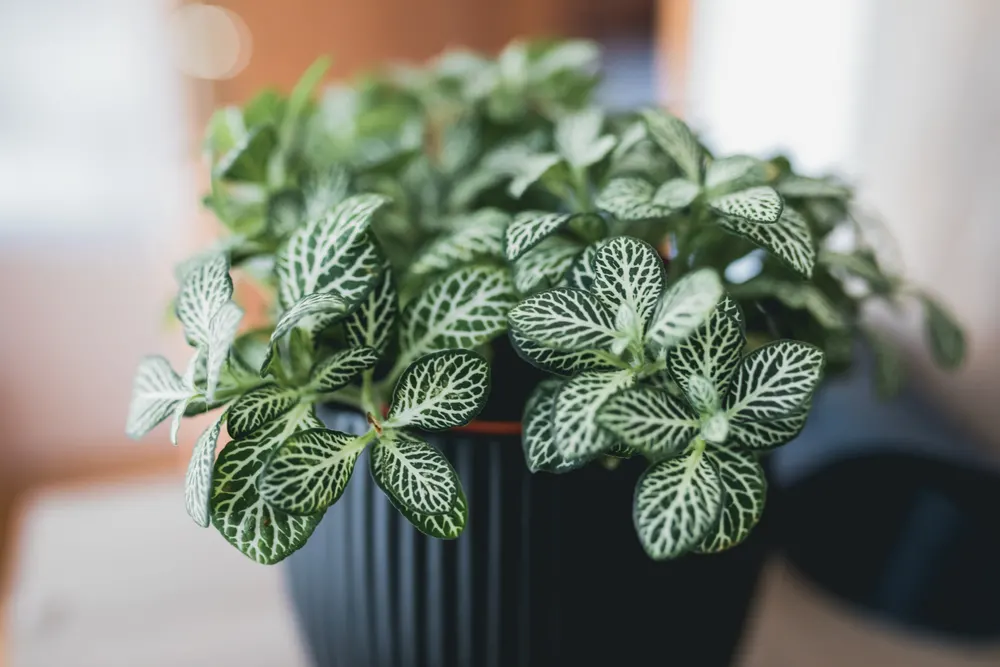
Nerve plant is a great pick for sultry bathrooms with limited amounts of sunlight.
Hailing from the rainforest understory in Colombia and Peru, nerve plant can’t tolerate direct sun and much prefers the reduced light of a north facing window.
These plants are petite and low-growing with green oval leaves that are covered with intricate veins in contrasting white, pink, or red. Because of their small stature, they are great in pots, on a shelf, or in a hanging planter.
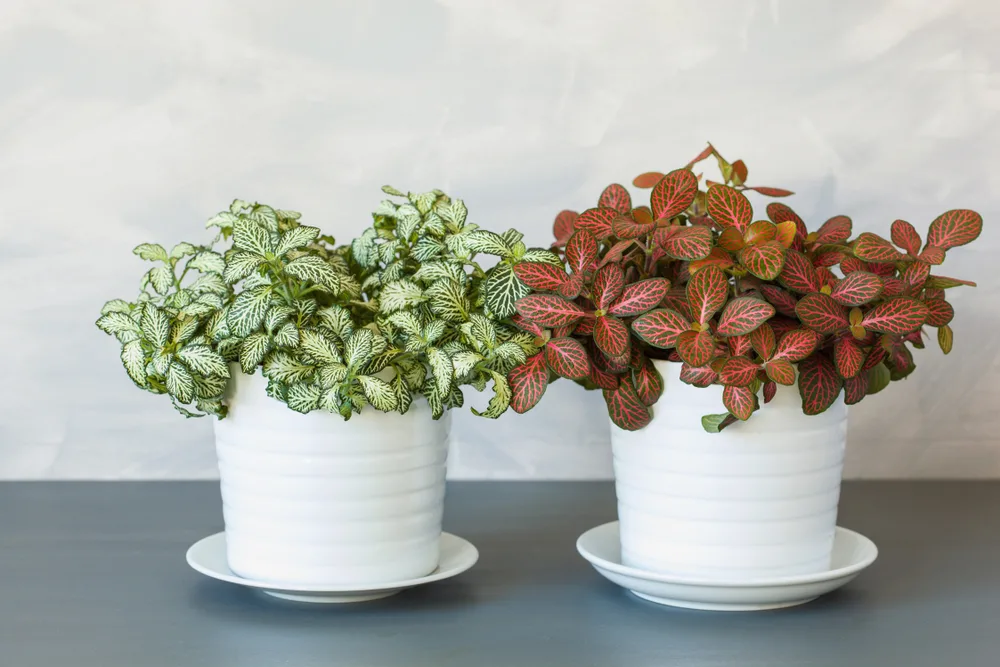
Nerve plants do, however, require a consistently high humidity environment. Withered leaves means the plant is displeased with the amount of air moisture it’s receiving.
Light requirements: Medium to low light
Water needs: Water when the surface of the soil is dry
Temperature range: 65°F to 80°F (18°C to 27°C)
10. Pothos (Epipremnum aureum)
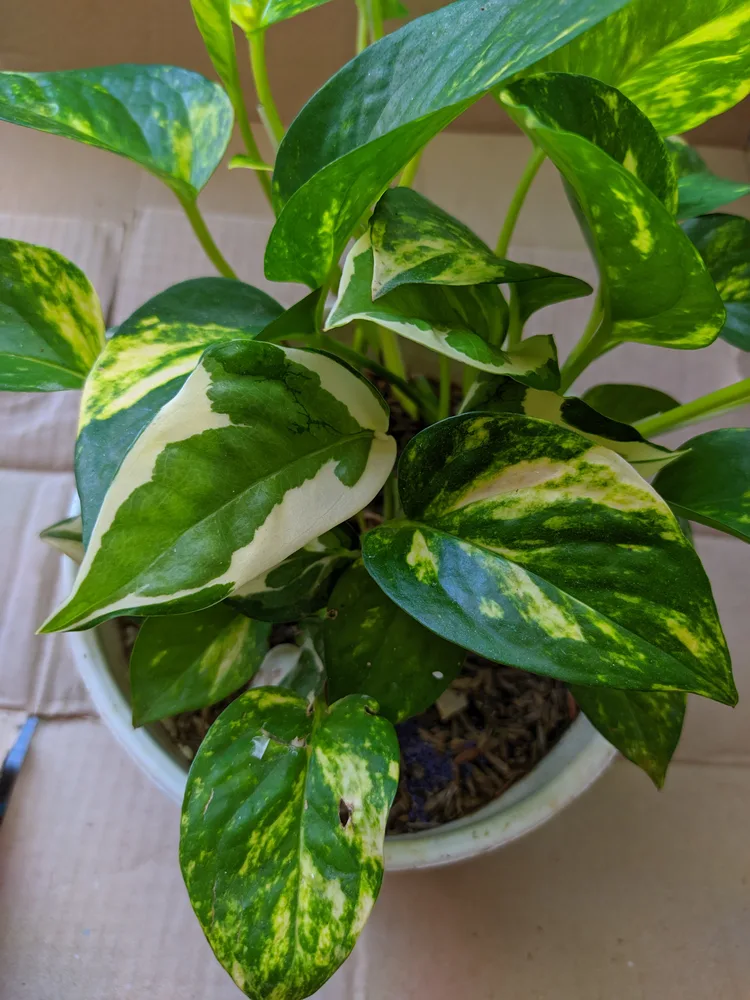
Where all others might fail, there’s always the indestructible pothos!
The O.G. of houseplants, pothos is tough as nails and can take a whole lot of neglect. Too little by the way of light, water, humidity, or fertilizer won’t faze pothos one bit.
Originating in French Polynesia, pothos is so hardy and carefree that it has become naturalized in tropical and subtropical forests all around the world.
Golden pothos is the standard-bearer for the species, with splotches of yellow on its glossy green heart-shaped leaves. But if golden is a bit too pedestrian for you, there’s the white flecked “Marble Queen”, chartreuse-hued “Neon”, silvery spotted “Satin”, and the cream mottled “N’Joy”.
Whatever the variety, pothos’ trailing vines looks amazing in a hanging basket or pinned up to grow along a wall.
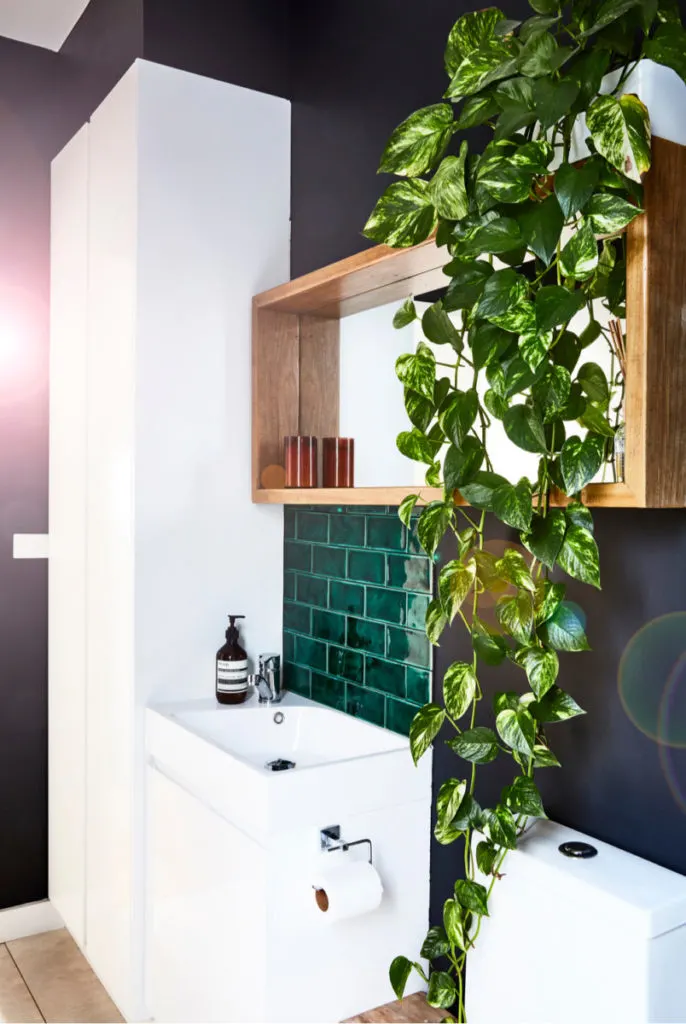
Pothos is an excellent choice for low light bathrooms, as the plant will appreciate the elevated humidity and can easily put up with shade for long periods of time. It’ll just grow slower.
Light requirements: High to low light
Water needs: Keep the soil consistently moist
Temperature range: 65°F to 85°F (18°C to 30°C)
The 3 Worst Kinds of Plants For Your Bathroom
Because the bathroom microclimate is most like a jungle biome, plants that come from a desert environment won’t like the lavatory at all.
Desert plants have evolved to survive in some of the harshest place on Earth, where it is dry and hot and very sunny.
Clearly these conditions are the exact opposite of the dewy shade that a bathroom will provide, so it’s best to keep these desert natives off the list:
Succulents
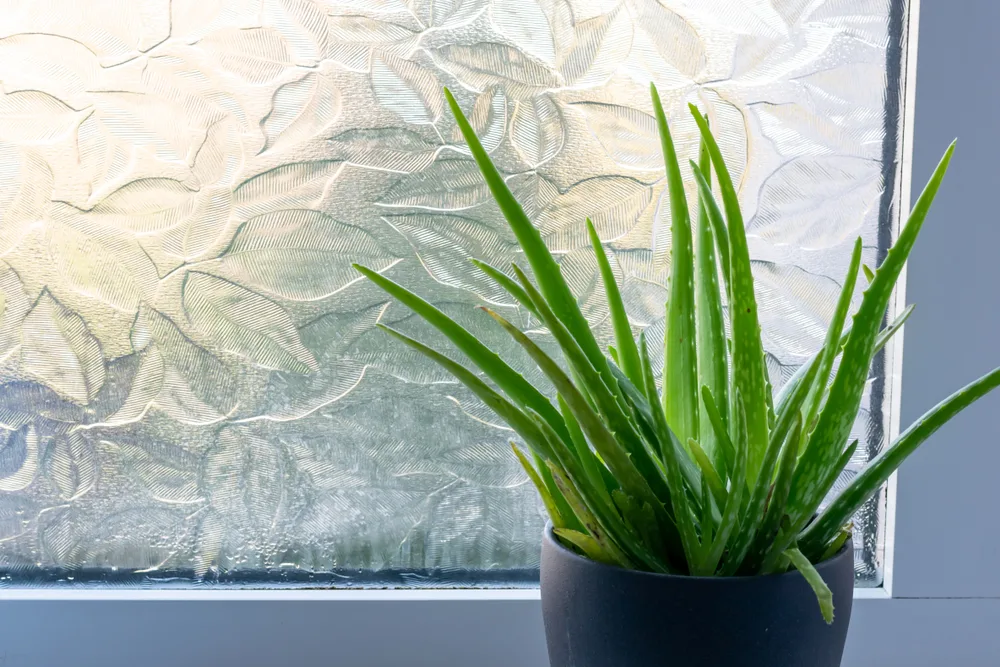
There are thousands of plants that fall under the banner of succulents, and these take on so many fascinating shapes, colors, and forms.
What all succulents have in common is a special adaptation that allows them to succeed in arid climates with little rainfall.
The thick and fleshy leaves, stems, or roots of succulents store water during rainy bouts so the plant can use it in drier periods.
Though succulents are low maintenance plants, too much moisture is the most common cause of death for these desert denizens.
Aloe, jade, string of pearls, Sedum, Kalanchoe, Lithops and other succulent members are best kept outside of a wet and wild bathroom.
Cacti
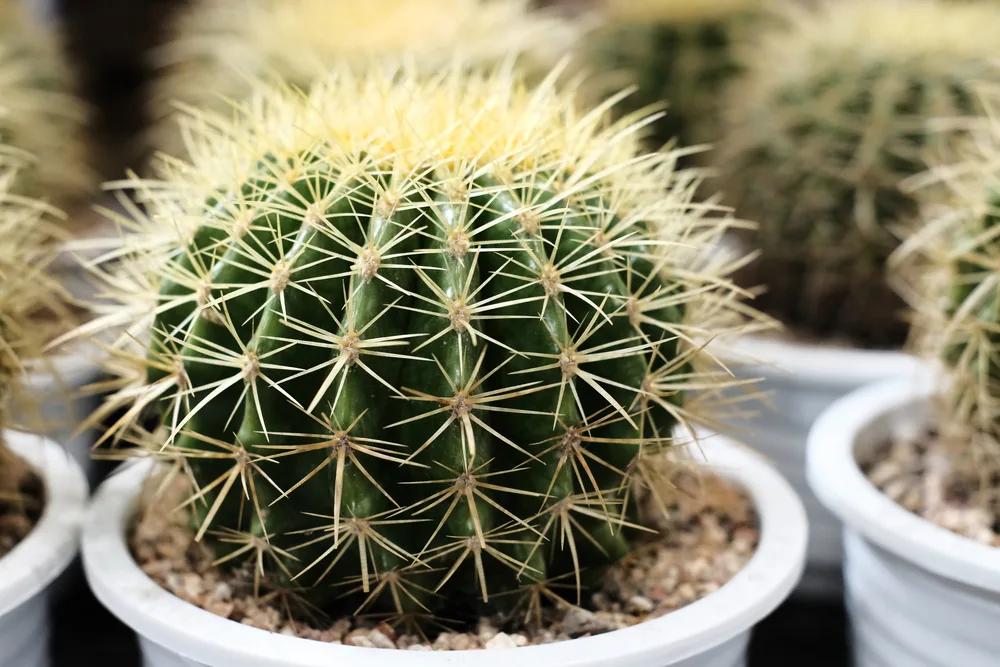
The succulent’s prickly cousin, cactus plants are another type of xerophyte with the incredible ability to store and conserve water in its large stems.
Cacti are super specialized for drought. The spines of a cactus are actually modified leaves that help prevent water loss by slowing airflow across the cactus’ flesh, reducing moisture loss.
Although a few species of cacti come from humid places, the majority – including bunny ear, ladyfinger, pin cushion, rat tail, and barrel cactus – need water scarcity to be at their best.
Yuccas
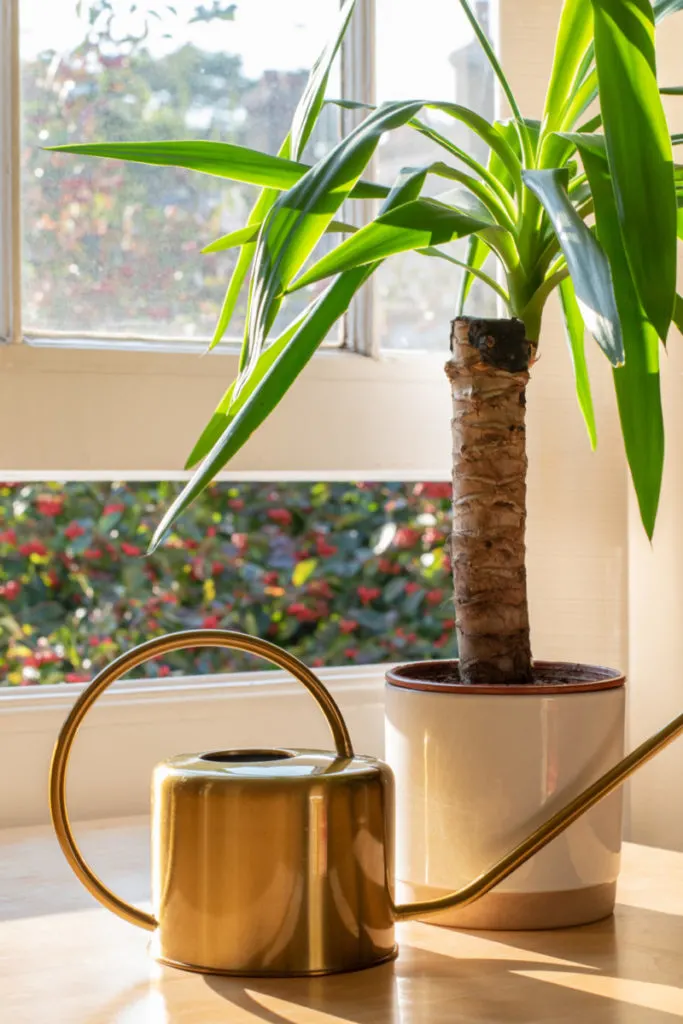
Yucca plants are sun-loving trees and shrubs that grow in rocky deserts, badlands, and coastal sands throughout North, Central, and South America.
Yucca cane (Yucca gigantea) is the most common houseplant variety. It has a thick and round single trunk topped with clumps of narrow, sword shaped bluish green leaves.
As tropical as yucca canes look, these plants like things hot, sunny, and dry. Too much water and high levels of humidity can cause yucca stems to rot.
